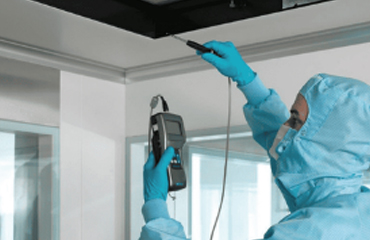Area Recovery Test
Area Recovery Test evaluates a controlled environment’s ability to recover from contamination. It measures the time taken to return to a stable state after a particle injection. Critical in industries like pharmaceuticals and cleanrooms. Ensures the environment’s cleanliness and safety.

Purpose
The purpose of an Area Recovery Test is to:
- Verify air purification system performance: Ensure the system can recover from a particle challenge and return to a clean state.
- Evaluate cleanroom classification: Determine if the cleanroom meets the required classification standards for particle concentration.
- Identify areas for improvement: Detect any weaknesses in the air purification system or cleanroom design.
How it's done
- Particle challenge: A known quantity of particles is introduced into the cleanroom.
- Air sampling: Particle counters are used to measure the particle concentration at various points in the cleanroom.
- Recovery time measurement: The time it takes for the particle concentration to return to a specified level is measured.
Benefits:
- Ensures cleanroom performance: Verifies that the cleanroom meets the required standards for particle concentration.
- Optimizes air purification system design: Helps identify areas for improvement in the air purification system.
- Reduces contamination risk: Ensures the cleanroom is designed and operated to minimize the risk of contamination.
Applications:
Area Recovery Tests are commonly used in:
- Cleanrooms: Controlled environments that require high levels of air purity, such as in pharmaceutical, biotechnology, and electronics manufacturing.
- Pharmaceutical manufacturing: To ensure the quality and safety of pharmaceutical products.
- Biotechnology research: To maintain a controlled environment for sensitive research and experimentation.
Assess area recovery rates – Schedule your test today!
